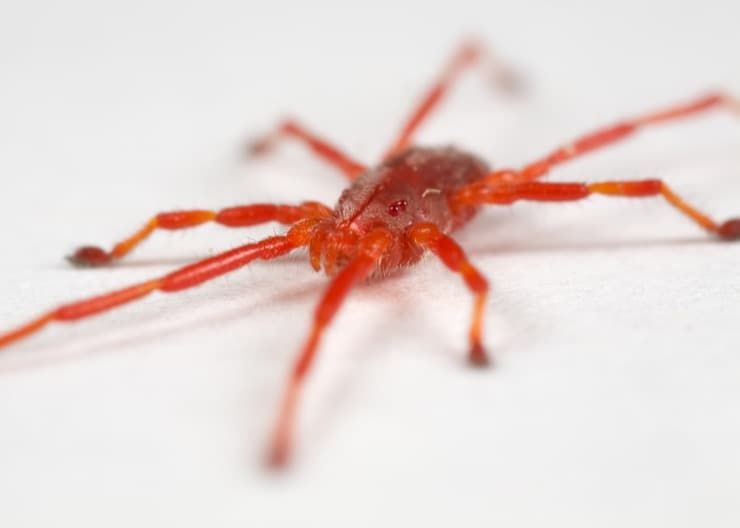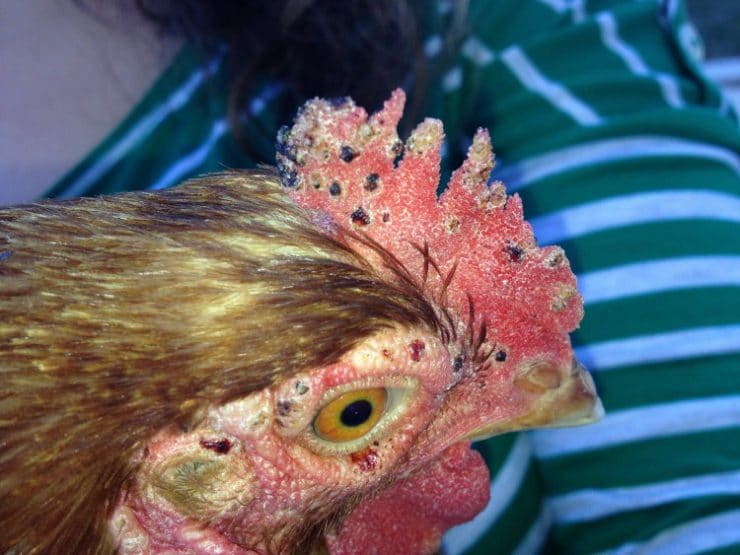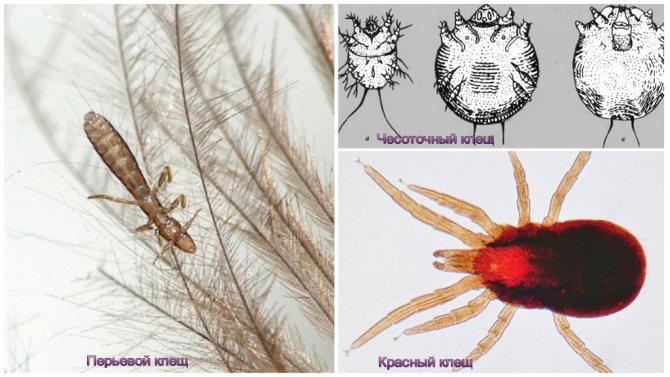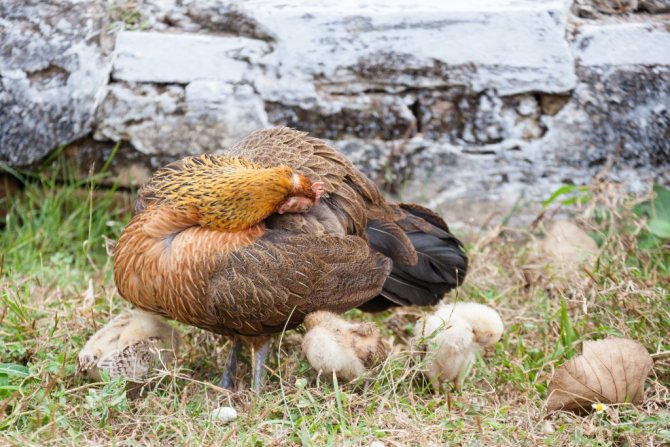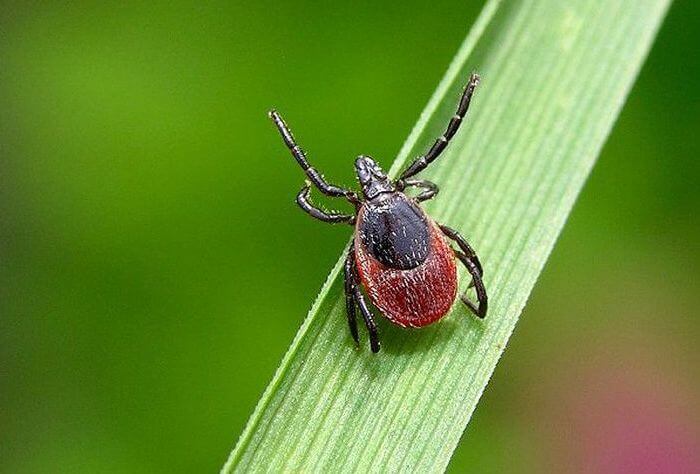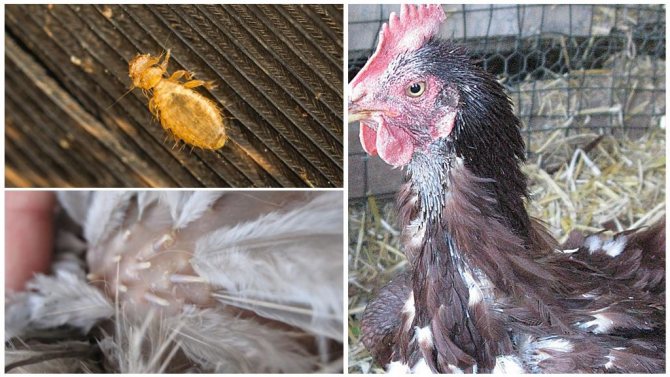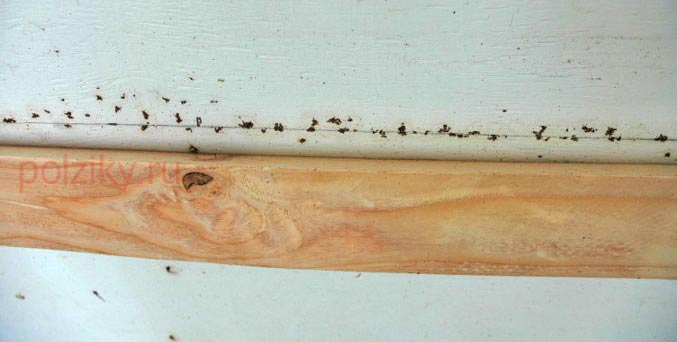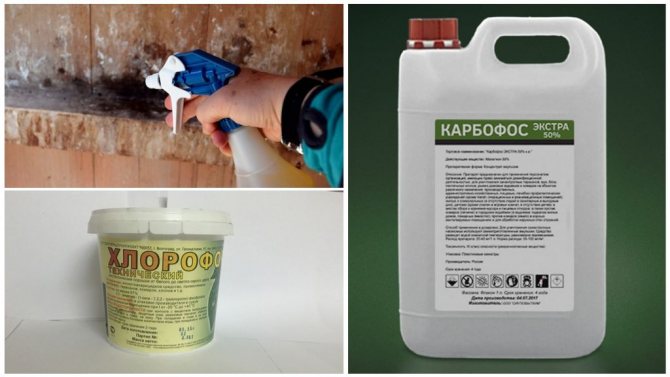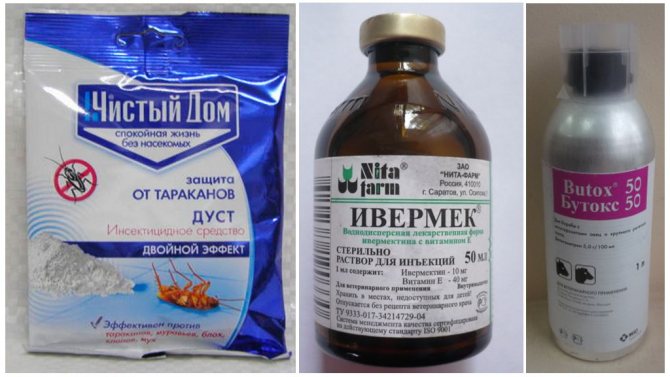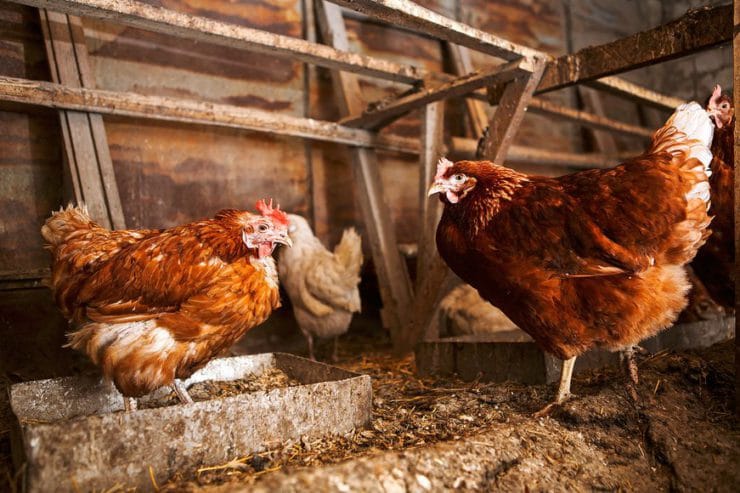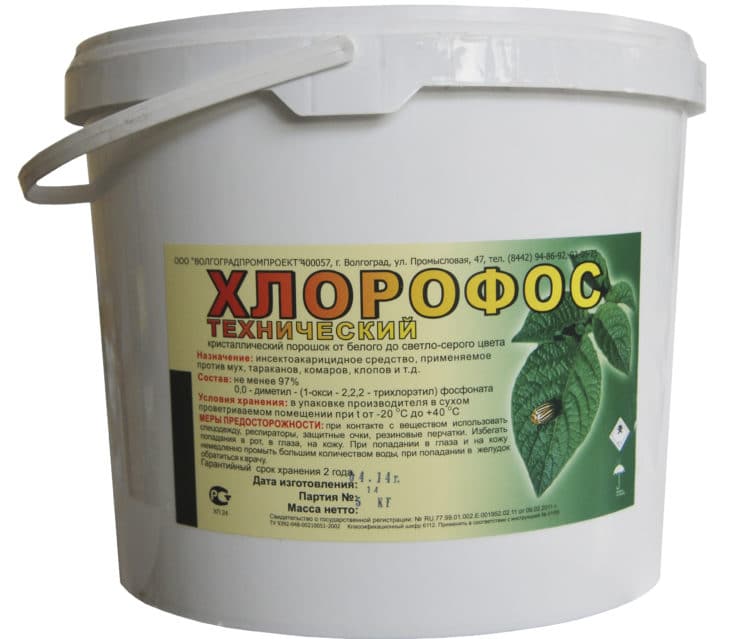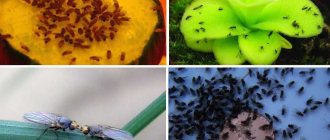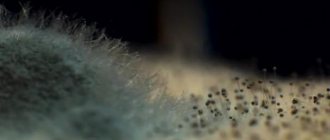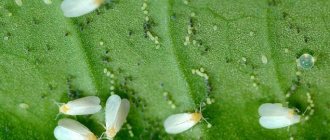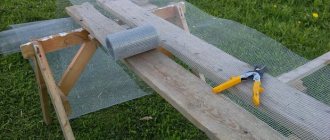Poultry in the summer are often attacked by ectoparasites. Feather mites in chickens are a problem that every farmer can face. Those who have just started poultry should know that layers are attacked by different types of skin parasites, including the itch mite. It is important to learn to recognize the signs of infection in chickens at the initial stage, because productivity indicators depend on this.
Feather mite in chickens
Why are parasites dangerous for chickens?
Scabies, blood-sucking, other types of mites parasitizing chickens annoy poultry more than fleas or chewing lice. Dangerous ectoparasites cause severe exhaustion, disrupt the barrier function of the skin, worsen the condition of the feather, and at the same time are carriers of many deadly infections.
Ticks are widespread in nature and are active in the warm season. They feed on blood, elements of cellular structures. Parasites live in birds on their legs, in feather bags, feather follicles, upper and deep folds of the epidermis.
In domestic chickens, ticks provoke the following diseases:
- Knemidocoptosis of the body (body scabies). The disease is caused by ticks from the genus Knemidokoptes. They live in deep folds of the epidermis. They provoke inflammation, destroy the cells of the dermis. A characteristic feature is the appearance of small nodules on the body. This type of mite can infect the legs.
- Epidermoptosis (skin scabies). Causes the epidermoptes mite. It parasitizes in feather follicles, among fluff. It provokes plumage loss, acute inflammation in various structures of the dermis.
- Cytolychosis, cytoditosis, sternostomosis. The disease is caused by a tick from the genus cystodites. Parasitizes in the bronchi, upper respiratory tract of the bird.
- Malofagosis. The disease is provoked by puff-eating mites. They live in the space under the feathers, under the wings, they strike the spine of the feather.
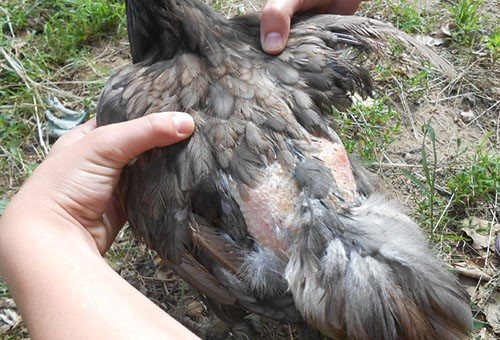
Feather mite infested chicken
Ixodid ticks, which are ubiquitous, are not particularly dangerous for chickens. The parasites feed on blood. In rare cases, females attack a bird, but after drinking blood, they disappear. Having found an ixodid tick on the body of a bird, do not panic. They are not dangerous for poultry.
Varieties
Large
Large ticks can be easily seen, visually and in size they are similar to fleas. Varieties:
The most dangerous is the red tick - it carries viruses, bacteria, spreads typhoid, cholera, spirochitosis, borreliosis.
Microscopic
- Knemidokoptes
- cause the appearance of body and foot scabies. - Epidermoptes
- microorganism-causative agent of skin scabies pathology. - Cytodites
- a pulmonary or tracheal micro mite that feeds on secretions of the epidermis and particles of cellular structures.
Signs of infection in females
You can understand that a bird is infected with ticks on several grounds. Parasites can be seen in different parts of the house - on the walls, under the perches, in the cracks in the floor.
If the bird has become inactive, experiences severe itching, egg production has decreased, the young are gaining weight poorly, the plumage condition has worsened or bald spots appear on the body, it is most likely that the chickens are infected with ticks.
Pay attention to the behavior of the feathered wards.If the chickens began to clean their feathers more often, pluck out feathers under their wings, in the area of the cloaca, constantly take "sand" baths - this may also indicate an infection with feather, itch mites.
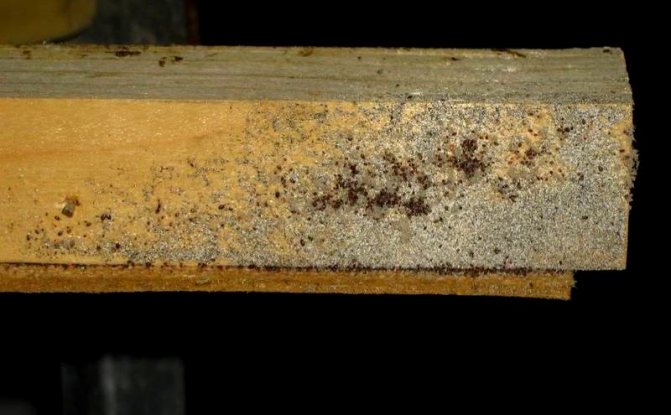

Ticks in the chicken coop
Other symptoms when chickens have ticks:
- weakness, apathy;
- wounds, scratches, sores on the body;
- dry frequent cough, shortness of breath;
- pallor of mucous membranes, comb, earrings;
- lack of egg production in laying hens;
- weight loss;
- refusal to eat, increased thirst.
Upon closer inspection, you can see small red or black specks, small grains, blood droplets on feathers, the body of birds or on the walls of chicken coops, perches.
You can find a tick by placing material from a nest, perch, chicken coop on a white sheet of paper and examine it in bright light. It is best to take the material in the evening, at night.


Acarimorph mite
Having determined that the bird is infected with ticks, you need to immediately get rid of the blood-sucking parasites, because under favorable conditions they multiply very quickly, and the invasion can become a real problem, which will result in large financial losses. Even if the tick lives only on one chicken, over time, if the bird is not cured and ectoparasites are not removed, the entire chicken population will be infected.
Red chicken mites
The red chicken mite, which got its name from the color of its small body, belongs to the class of blood-sucking parasites. It is a carrier of various viruses, bacteria, spreads the causative agent of cholera, typhoid, borreliosis, spirochitosis.
The body length of the parasites does not exceed 0.6–0.7 mm. The color of the body is dark brown, brownish red. After the blood mite has drunk blood, the body turns purple. The female is capable of laying 15–20 eggs per day. The maximum period of activity of red chicken mites is from May to mid-October. Parasites have a complex life cycle that includes several larval stages and depends on environmental conditions. Its duration is 6-13 days.


Red chicken mite
The blood-sucking parasite prefers a warm, humid microclimate. It lives in damp, humid, poorly ventilated areas. The maximum accumulation of chicken mites can be seen in the litter. At the same time, it is not so difficult to detect parasites. Some chicken mites are constantly on the surface of the body of an invaded bird, others live in chicken coops, poultry houses, hiding in the litter, under perches, in cracks on the walls, floor and with the onset of night they leave their shelter in search of a new victim.
Advice! If the chickens are reluctant to enter the hen house, equip new nesting places, experience severe itching - these are clear signs of bird infection with red ticks.
The red chicken mite feeds on blood by biting and damaging the skin. The bird experiences discomfort, itching, and anxiety. The condition of the feather cover is greatly deteriorating, the immunity is weakening, anemia develops, which can cause the death of the invaded feathered wards.
Dangerous pests enter the farms with the newly arrived livestock of chickens. Parasites can spread with household items and equipment. Most often, red ticks live in premises, backyards with unsatisfactory sanitary conditions.
Infection is facilitated by high humidity in poultry houses, the absence of sand baths for females, and a high density of birds in a confined space. It is worth noting that red chicken mites are dangerous to humans. They cause severe itching and allergies.
When day-old chicks are settled in poultry houses with ticks, a high mortality rate is noted. Chicks die from exhaustion, anemia within 5-7 days.
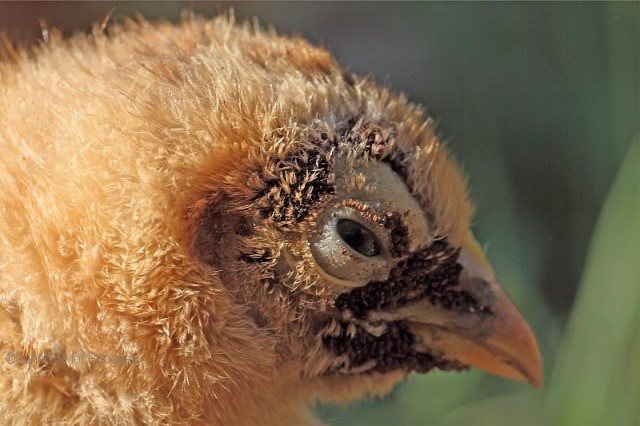

Strong chicken infestation with chicken mites
How to clean the air in the poultry house and what are smoke bombs useful for?
Disinfection with a sulfuric smoke bomb belongs to aerosol treatment. Due to its properties, sulfur is capable of destroying most dangerous microorganisms, mold, fungus, but does not affect bacteria.
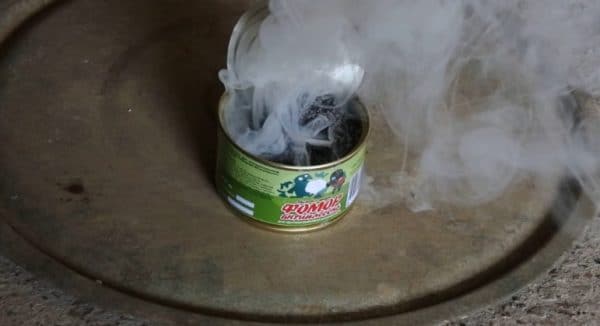

Disinfection of a chicken coop with a sulfuric smoke bomb
The disadvantage of a sulfuric smoke bomb is the need for long-term ventilation after disinfection (about a week), but the method cleans the air from spores and parasite eggs. This method is used to clean the chicken coop after the complete elimination of the livestock for the subsequent introduction of the young.
A sulfur checker can also harm the human body, so it is imperative to wear protective clothing and a respirator.
Separately, air purification with an iodine checker should be highlighted: such treatment does not require additional ventilation and can be carried out without evacuating the bird population.
A popular iodine checker is Dixam - the agent is left inside the house for several hours, which allows the destruction of most types of bacteria and fungal spores.
Chicken mites that infect nails, bird feathers
In addition to the red chicken tick, feather ticks and acariform chicken ticks pose a danger to domestic chickens, especially small chickens and young individuals.
The feather mite in chickens lives on the feather shaft, in the hole, feeds on circulating blood, which over time leads to the gradual destruction of the feather, deterioration of the plumage condition. With a strong infection, chickens may be left completely without feathers. Unfortunately, at the moment, an effective treatment for feather mites in chickens has not been developed.


Feather mites attack the spine of a bird's feathers. Feathers become brittle
Acariform mites in chickens provoke knemidocoptosis (foot scabies), to which males are more susceptible than chickens. The disease is also known as calcareous foot. It has a slow development, so the manifestations can not be noticed immediately.
A characteristic sign by which it can be determined that a bird is infected with this type of parasite is a thickening of the stratum corneum of the skin on the legs. The phalanges of the fingers are completely covered with a bluish bloom. Severe infection can lead to deformation of the limbs, therefore, sick chickens should be treated immediately after the first symptoms appear.
Important! The parasite lives under the horny scales on the legs of domestic, wild birds. All stages of its development take place on the host. In the external environment, under favorable conditions, there is no more than 10 days. In breeds of chickens with plumage on the legs, foot scabies is rarely diagnosed.


Foot scabies infection
If the bird is infected with foot scabies, the sick hen has difficulty walking and becomes inactive. Dense gray outgrowths are visible on the paws. The skin of the legs becomes bumpy. Pathological exudate accumulates under the scales. Over time, if you do not start treatment, the scabies mite becomes the cause of the deformation of the limbs.
Treatment
Birch tar is used to treat acariform chicken mites on the legs of poultry. It is heated to a temperature of 40 degrees, poured into a deep bath and the chicken is placed in the solution at the hock joint. You can simply apply tar on the parasitic surface of your leg using a soft brush at intervals of 6-7 days.


Birch tar kills mites on chicken legs
Advice! If the tick lives on the legs of chickens, use a solution of Trichlormetaphos or a mixture of birch tar with kerosene in a 1: 1 ratio.
If chickens are infected with a scabies mite that lives on the legs, parasites can be removed using complex acaricide-insecticidal agents in drops, solutions, aerosols. They are simply rubbed into the affected skin several times at intervals of 2-3 days.
Danger and harm to humans
Chicken mite is both a pest and a parasite for human activities. Its pest qualities are in attacking poultry houses, which greatly reduces the productivity of chickens, and can also cause their death if the concentration of parasite colonies is too high.
Young birds and laying hens are the weakest to tick bites. In our country, statistics poorly take into account the harm from chicken ticks, but, for example, in the European Union, the losses of the egg industry associated with the vital activity of the parasite are estimated on average at € 130 million per year.
Among other things, the chicken tick is a well-known vector of diseases such as avian pox virus, Newcastle virus and avian cholera.
Effective methods for cleaning a chicken coop
The main method of control, which will allow the hanging of ticks in poultry, is a complex disinfection, deacarization of the poultry house, cages, rooms in which the bird is kept. Treat walls, floors, perches, ceilings, and equipment with insecticidal and acaricidal solutions, special chemicals. Wash the feeders and drinkers thoroughly. Change the pad.
Floors, walls, perches in chicken coops can be treated with boiling water or a blowtorch. From ticks in the poultry house, you can hang or spread wormwood, mint, tomato, potato tops, parsley, onion feathers, garlic in the corners. The aromas of these plants scare away not only chicken ticks, but also other ectoparasites.
For deacarization, you can use:
- cyodrine 0.5%;
- dicresol 0.25%;
- karbofos;
- chlorophos 1-2%;
- trichlorometaphos 0.5-1%;
- DDWF 0.25-0.5%;
- neocidol 0.25-0.5%.
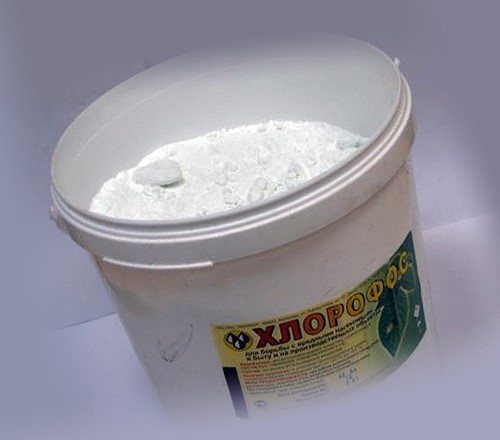

Chlorophos is used to disinfect poultry houses
Important! If the bird is infected with a red, Persian tick, the poultry houses are treated two or three times with an interval of 3–6 days.
Examine the chickens carefully. If there are wounds or scratches on the body, treat the affected areas with antiseptic solutions. The lesions can be lubricated with vegetable oil, wound healing ointments, liniment.
There are many effective acaricidal agents on the market for controlling chicken mites. To get rid of parasites, veterinarians recommend using for chickens:
- Sevin (powder).
- Ecoflix (oily liquid).
- Extrasol M (aerosol).
- Pyrethrum.
- Promectin.
- Ectomin (emulsion).
- Spray with pyremetrin EC (new generation insecticide).
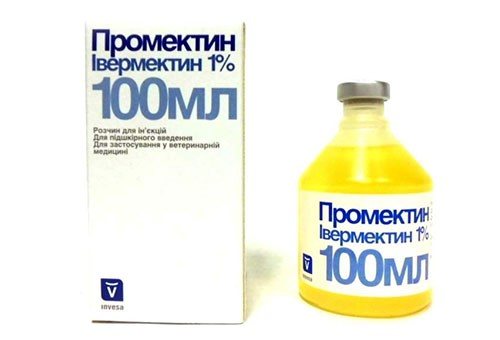

Acaricide for bird ticks
With a strong infection, you will have to remove ticks in several approaches. Treatments are carried out at intervals of 5-10 days, depending on the agent used.
Before use, carefully read the instructions for the preparation. When choosing an insecticide-acaricidal agent, be sure to consult with your veterinarian. Some drugs are strictly forbidden to use for treatments, since their active substances accumulate in eggs and meat.
In the fight against chicken mites, you can use folk remedies. Add wood ash to sand trays. By cleaning feathers in such a mixture, the bird dumps parasites from the body. Sand baths with ash are also a good method of preventing tick infestation of chickens. Do not forget to periodically change the composition of the "dusty" fonts.
Prevention measures
Veterinarians agree that it is much easier to carry out timely preventive work than to fight parasites.
Chicken mite prevention consists in keeping the chicken coop clean and cleaned regularly. It is necessary to remove droppings in a timely manner, change the litter, keeping it dry, sweep away the cobwebs, pour boiling water over drinkers and feeders. A place for walking birds must be organized in a well-lit place, preferably sprinkled with sand. Disinfection of the chicken coop must be carried out at least once a month.
It is also necessary to check all packaging delivered from other farms. There is a weak spot in metal containers for collecting eggs - a plastic gasket.It must be thoroughly rinsed with a cleaning agent.
Bird inspections are imperative, especially from late spring to early autumn.
If the birds become infected after treatment, the house must be thoroughly disinfected. The litter should be removed and incinerated. Whitewash the walls with fresh lime or 5% Creolin solution. It is also recommended to treat all wooden surfaces of the hen house with a blowtorch, as tick larvae remain in them.
If more than 10% of the population is affected, it is recommended to replace the entire herd.


